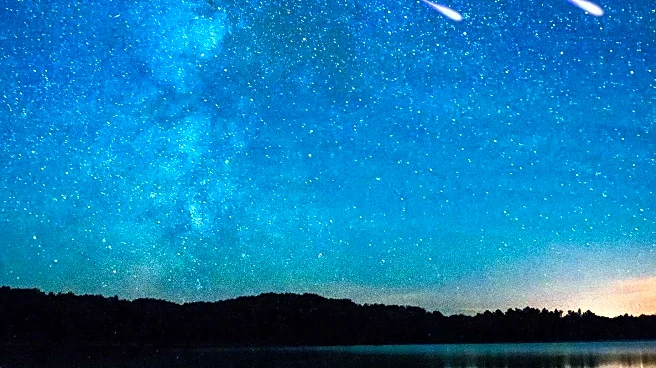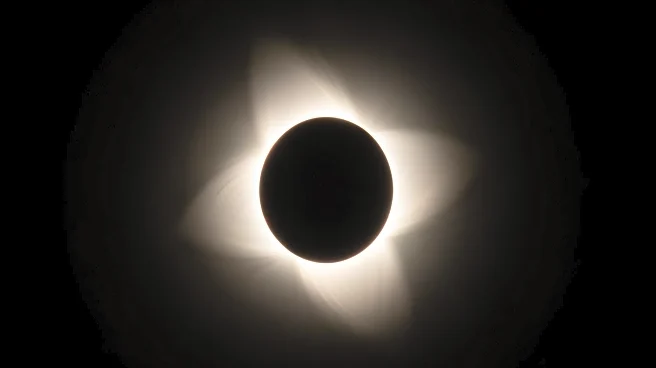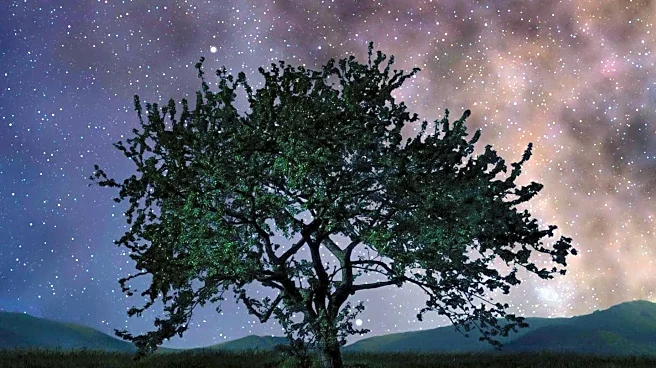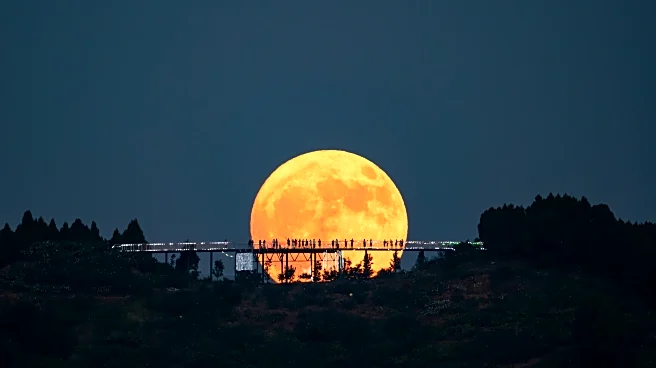What's Happening?
The November 2025 full moon, known as the beaver supermoon, is set to rise on November 5, reaching peak illumination at 8:19 a.m. ET. This supermoon will be the closest to Earth this year, at a distance of 221,817 miles, making it appear larger and brighter
than usual. The beaver moon is traditionally named for the time when beavers build their dams in preparation for winter. This celestial event coincides with the peak of the southern Taurids meteor shower, followed by the northern Taurids and the Leonids later in the month. The supermoon will be visible on the nights of November 4 and 5, offering a spectacular view as it rises low on the horizon.
Why It's Important?
The beaver supermoon and accompanying meteor showers provide a unique opportunity for skywatchers and astronomy enthusiasts to witness a rare celestial event. Supermoons, which occur when the moon is closest to Earth, appear larger and brighter, enhancing the visual experience. The timing with the Taurids and Leonids meteor showers adds to the spectacle, as these events are known for producing bright fireballs. This alignment of astronomical phenomena not only captivates the public's interest but also highlights the natural cycles and folklore associated with lunar phases, enriching cultural and scientific understanding.
What's Next?
Following the beaver supermoon, the northern Taurids meteor shower will peak on November 11-12, offering another chance to observe meteors. The Leonids, known for their bright and fast meteors, will peak on November 18, providing further opportunities for skywatching. These events encourage public engagement with astronomy and may inspire educational activities and discussions about celestial mechanics and the cultural significance of lunar events.
Beyond the Headlines
The beaver supermoon and meteor showers underscore the enduring human fascination with the night sky and its influence on cultural traditions. The naming of the beaver moon reflects historical practices and the relationship between natural events and human activities. Such celestial events also prompt discussions about the scientific principles governing the universe, fostering a deeper appreciation for the interconnectedness of natural phenomena.














